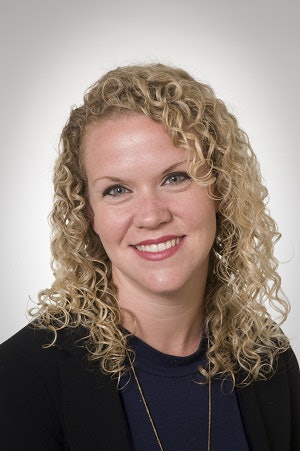U.S. employers cut 20.5 million jobs in April, according to a U.S. Bureau of Labor Statistics report. Meanwhile, the national unemployment rate surged to 14.7% this month.
People need work, and for some, that’s going to mean going back to school for new credentials. With the pandemic as a backdrop, a webinar – hosted by the center-left think tank Third Way and sponsored by the Lumina Foundation – explored how workforce credentialing could be made quicker and more accessible to those who need it the most.
 Lindsey Reichlin Cruse
Lindsey Reichlin CruseTen speakers addressed the question from across industries and sectors.
Lindsey Reichlin Cruse, study director at the Institute for Women’s Policy Research, focused on the needs of student parents.
“Given half of all student parents are caring for children under the age of six, access to affordable and high quality and early learning for their children is really essential to their ability to enter and complete postsecondary education,” she said.
Cruse advocated for “intentional partnerships” between universities and the Head Start system, U.S. Department of Health and Human Services programs for early childhood education with wraparound supports for low-income parents.
Too often, the Head Start system and higher education are “black boxes” to each other, she said, when they could actually enhance each other’s work. She would like to see Head Start programs operating on more college campuses so they could offer student parents coaching and referrals for campus-specific services.
Another segment of the population that needs extra attention is incarcerated people planning to enter the workforce, said Dr. Monique Ositelu, senior policy analyst with the education policy program at New America, a left-of-center think tank.
 Dr. Monique O. Ositelu
Dr. Monique O. OsiteluHer research found that those who complete a postsecondary degree or a work training program in prison face a smaller skills gap from the general population and are more prepared to compete for jobs upon release. Meanwhile, financial stability leads to lower rates of recidivism. Ositelu doesn’t want to see those positive effects curtailed as states limit their spending amid the coronavirus.
“We are in a global pandemic that is having economic impacts, and a lot of times, that calls for budget cuts,” she said. “However, that cannot happen with regard to correctional education.”
Other speakers focused on the role employers can play in ensuring their workers earn credentials to advance in their careers and the program models that best enable them to do so.
For example, Lul Tesfai, a senior policy analyst at the Center on Education & Skills at New America, suggested the expansion of degree apprenticeship programs, where employees work toward credentials through a combination of classes and on-the-job training.
She believes these kinds of programs should be a “key component of our credentialing strategy,” because there’s a demand for college-educated workers in growing industries like infrastructure technology and healthcare, especially during a pandemic.
After the Great Recession, more than half of jobs required a bachelor’s degree, she said, and this is a pattern for economic downturns. She also praised degree apprenticeship programs for their emphasis on “experiential learning” and mentorship.
Janna Baressi, Walmart’s director of federal government relations, gave another example of a potential model for employer-supported education. She spoke about Walmart’s Live Better U initiative, which offers employees access to low-cost degrees and professional certification programs as a part of their employment benefits.
It was designed with the “realities of the working learner in mind,” she said. For example, Walmart rejected a reimbursement model, where an employer pays a student back for their education costs, to avoid frontloading costs for students.
Speakers like Molly Eligin-Cossart, chief impact officer at Merit America, highlighted the need for affordable credentialing programs to specifically move low-wage workers into higher-paying jobs, especially in STEM fields. Merit America is a non-profit that helps underemployed or unemployed adults get a STEM education with individual career coaching and job placement support. Most participating students never completed their degrees, she said, and about 70% are students of color.
These workers “can’t do full-time, in-person programs and need to balance work [or sometimes being in and out of the workforce], their families, paying rent and other obligations,” she said. And as unemployment rises in response to the pandemic, “the need is that much greater now.”
Kelsey Berkowitz, a senior advisor for Third Way’s economic program, shared her hopes for prospective learners amid the pandemic and her thoughts on how these different models can help.
“How can we help people come back from this?” she asked. “Gaining in-demand credentials is one way we can help them re-enter the workforce and succeed. Making it easier to navigate different credentialing options and earn credentials and helping people share the learning that they’ve done over the course of their career as one cohesive narrative, that’s all part of how we can help people come back from this.”
Sara Weissman can be reached at [email protected].





















